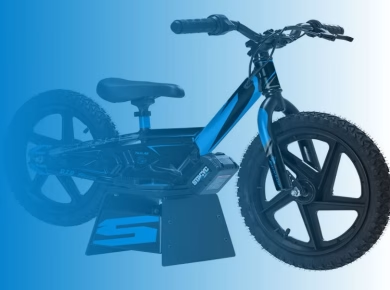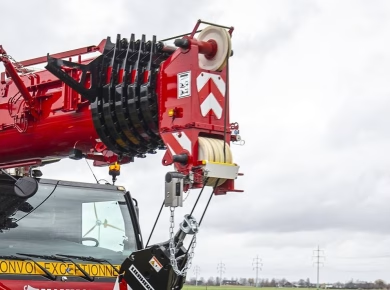Stepping onto the construction site each morning, the sheer weight of responsibility hangs in the air. It’s not just about meeting deadlines or juggling budgets; it’s about the safety of everyone on that site. I’ve seen firsthand how a single misstep can lead to accidents that ripple through a workforce, affecting not just productivity but the lives of individuals and their families. One of the most critical pieces of equipment that often gets overlooked in these discussions is foot protection. Enter met guards—an essential component of personal protective equipment (PPE) that can make a world of difference in preventing injuries.
The Importance of Foot Protection on the Job Site
The construction industry is fraught with hazards that can harm workers’ feet. Heavy materials, sharp tools, and uneven surfaces create an environment where foot injuries are common. According to the Bureau of Labor Statistics, foot injuries account for a significant percentage of workplace incidents. When it comes to safety, prevention is key, and having the right protective footwear is a fundamental first step.
Met guards, or metatarsal guards, offer an added layer of protection specifically designed to shield the metatarsal bones—the long bones located in the middle of the foot—from impact and compression. While many professionals might think standard steel-toe boots are sufficient, the reality is that they often leave the metatarsal area vulnerable.
Real-World Examples of Foot Injuries
Consider a colleague of mine who experienced a near-miss when a heavy beam fell from a height. While he was wearing steel-toed boots, the lack of additional metatarsal protection left him with a painful bruise that sidelined him for weeks. In another instance, a worker at a site I managed stepped on a sharp object that pierced the top of his boot, leading to a severe laceration. Both situations underscore the importance of comprehensive foot protection.
What Are Met Guards and How Do They Work?
Met guards are typically designed as hard, protective shells that fit over the top of your boot, offering coverage to the metatarsal area. They are often constructed from materials like steel or composite materials, designed to withstand heavy impacts and punctures.
When choosing footwear, it’s crucial to consider not just the toe protection but also how the met guards integrate with the overall boot design. Some boots come with built-in met guards, while others allow for detachable options that can be added for enhanced protection. This flexibility is key for professionals who move between different job sites with varying levels of risk.
Choosing the Right Met Guard Footwear
Selecting the right footwear with met guards requires careful consideration of several factors. First, assess the specific hazards present at your worksite. If heavy materials are frequently moved overhead, a robust met guard is essential. On the other hand, if your work involves more light-duty tasks, a lighter option may suffice.
It’s also vital to ensure that the footwear fits well. Ill-fitting boots can lead to discomfort, distraction, and ultimately, accidents. A snug fit with adequate breathability can help maintain focus on the job rather than on sore feet.
Integrating Met Guards into Your Safety Protocol
Incorporating met guards into your safety protocol necessitates communication and training. Workers should understand the importance of wearing met guard footwear and how it differs from standard options. Regular safety meetings can be an effective platform for discussing the importance of foot protection and sharing personal stories about close calls to reinforce the message.
Additionally, consider implementing a footwear policy that specifically mandates met guard use in high-risk areas. This not only ensures compliance but also fosters a culture of safety where everyone looks out for one another.
Conducting Regular Safety Audits
Regular safety audits are another essential step in ensuring that met guards and other protective gear are being utilized effectively. These audits should include checking the condition of footwear and ensuring that all employees are wearing appropriate gear. Encourage team members to speak up if they notice colleagues not adhering to safety protocols. It’s about creating an environment where safety is everyone’s responsibility.
Cost vs. Benefit: Investing in Met Guard Footwear
While some may view met guards as an unnecessary expense, the reality is that investing in high-quality protective footwear can save money in the long run. The costs associated with workplace injuries—medical expenses, lost workdays, and increased insurance premiums—can quickly add up. By equipping your team with met guard footwear, you’re not only enhancing their safety but also protecting your bottom line.
Moreover, the peace of mind that comes with knowing your team is protected can lead to improved morale and productivity. When workers feel safe, they are more likely to focus on their tasks, ultimately benefiting the entire operation.
The Bottom Line on Foot Protection
Foot protection is a crucial but often underappreciated aspect of workplace safety. Met guards provide an essential layer of protection that can prevent serious injuries and ultimately save lives. By prioritizing the right footwear and fostering a culture of safety, you’re not just checking a box; you’re making a commitment to the well-being of every individual on your site.
In reflecting on the importance of met guards, it’s clear they are not just an accessory; they are a necessity. As professionals in the construction, health and safety, and compliance training industries, we have a responsibility to advocate for the best practices in safety equipment. By doing so, we can ensure that every worker goes home safe at the end of the day, ready to return to their families and communities.


